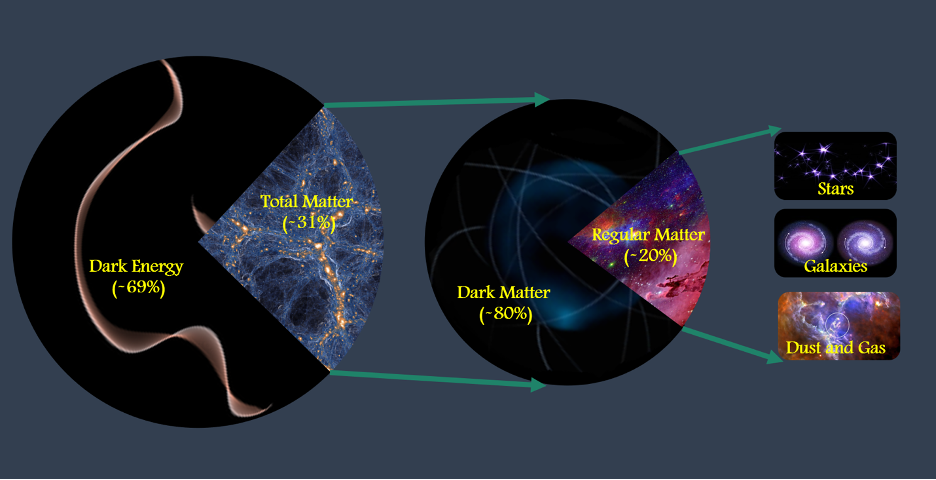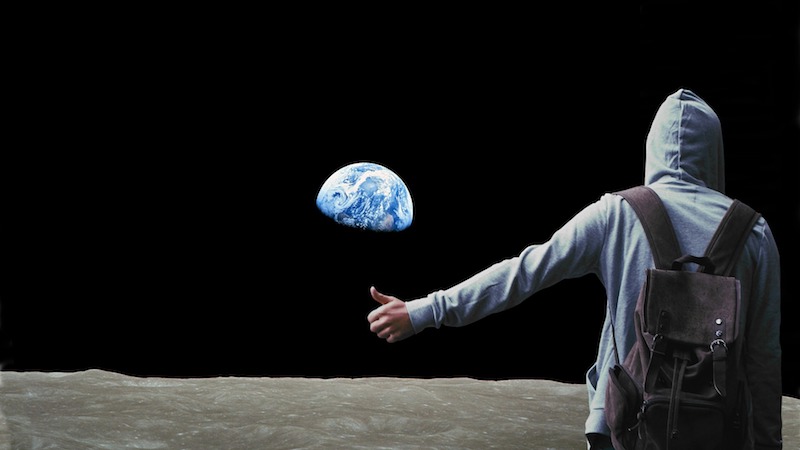If you’ve grown tired of answering the question “How much matter is there in the universe?” with “A lot,” a team of scientists at the University of California, Riverside, and other institutions have a much more precise answer.
Thirty-one.
Percent, that is.
On a side note, this probably would have been much more exciting had it been 42, which is the “Answer to the Ultimate Question of Life, the Universe, and Everything,” from The Hitchhiker’s Guide to the Galaxy by Douglas Adams.
Still, knowing that 31 percent of the total amount of matter and energy in the universe is matter is pretty exciting. The rest of the universe, by the way, is dark energy.
Lead author of the paper, Mohamed Abdullah, a graduate student in the UCR Department of Physics and Astronomy, said in a news release that if you spread all of the matter evenly throughout space, on average there would be the equivalent of six hydrogen atoms per cubic meter.
Which is not a lot.
But it’s actually less matter than what you think — or less “what you think of as matter” than what you think.
Eighty percent of matter is dark matter, said Abdullah. So the bulk of those six hydrogen atoms per cubic meter is a type of matter that is not clearly understood yet.
Their results were published in September in The Astrophysical Journal.

Researchers calculated that matter makes up about 31 percent of the total amount of matter and energy in the universe. Twenty percent of this matter consists of “baryonic” matter, which includes stars, galaxies, atoms, and life. The rest is made of dark matter, which is not fully understood. (UCR/Mohamed Abdullah)
Measuring matter in the universe
Abdullah said one way to measure the total amount of matter in the universe is to compare the number and mass of galaxy clusters per unit volume predicted by simulations to what is actually observed.
The galaxy clusters that we see today formed from matter that collapsed over the course of billions of years due to its own gravity. So the number of clusters today depends on the conditions present early on in the universe, in particular the total amount of matter.
More matter early on equals more galaxy clusters today.
The challenge in measuring the clusters, said Abdullah, is finding the “sweet spot” — not too high, not too low. This is not that easy, because much of the matter in the clusters is dark, so it’s not visible through telescopes.
To get around this, the researchers developed a tool which enabled them to use the orbits of galaxies in a cluster to measure the mass of the cluster. They applied this tool to observations from the Sloan Digital Sky Survey and then compared their findings to estimates of the total amount of matter in the universe based on simulations.
Co-author Gillian Wilson, a professor of physics and astronomy at UCR, said their value for the total amount of matter in the universe fits well with the values found using other methods, such as baryon acoustic oscillations, cosmic microwave background anisotropies, gravitational lensing, or Type Ia supernovae.
When the researchers combined their measurement with the values determined using other techniques, they calculated that matter makes up 31.5±1.3 percent of the total amount of matter and energy in the universe.
So the next time someone at a party asks you what the Answer to the Ultimate Question is, smile and say: “Thirty-one, give or take one-point-three … percent.”


